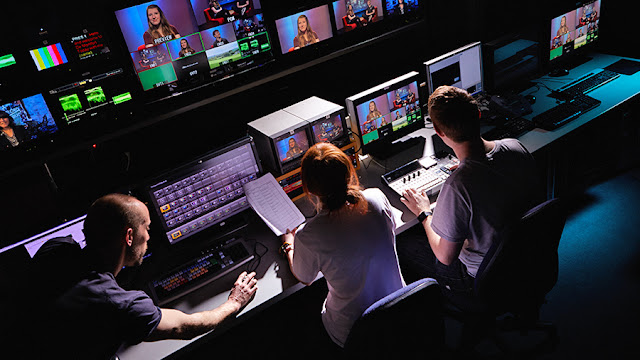Advanced Camera Workshop
Advanced Camera Workshop
In this post I will be writing about our first camera workshop that has to do with filming our music videos.
Recapping from what we learnt last year:
The cameras we use for our music videos are 'Nikon blackmagic ursa mini 4k'. You set up the camera by firstly opening up the tripod so it's standing up straight. If you're wondering why it wont open, it would be best to check for locks. Once opened, make the bottom flat on the ground so it's up on the same level as your waistline. You can then adjust it from the sides. After doing this, you've got to stick the pan handle on the right hand of the tripod in the circle. There is also a pan lock which is next to the spirit level and a tilt lock which you will see on the the left side of the tripod. Another important part is the friction hold which fixes the resistance on the camera and it's on the right hand side.
Another recap is white balance (WB), which is an adjustment on the camera which you have to change when you go to a different location or lighting. White balance is to maintain the neutral tones of the surrounding. We have to change it because depending on where we film the music video it will have to go with the location we are in, because if we are inside with manual lighting and the camera is on the outside mode, it won't look as good.
The shutter angle is all about setting up how the camera sees movement and how much motion blur there goes with it. This is measured in degrees that is why it is called shutter angle which actually means the shutter speed within filming.
360 degrees - There is much more blur when its a higher shutter angles. Creates an artistic/dreamy effect to the video. It isn't realistic.
180 degrees - Has a natural look to it.
90 degrees - We lose a lot of the motion blur (looking very sharp). You could use this for action movements, dancing scenes, sports. This could suit well with a type of kinetic style of dancing if you were to use it for the music video. Mainly for motions that are occuring.
The usual black magic camera has a zoom lens which means that you can change it from a wide to how close up you want it to be. Nevertheless, within this camera workshop we learnt about prime lenses which can't zoom whatsoever. These lenses are useful because if there is a very specific size you want for that distinct scene it means you wouldn't have to spend time binding that. One of the main reasons is because of the quality the different lenses give off when filming, each of the lenses have one job which is to nail the shot you specifically desire. However, it does take time as you have to switch to a different lens for each shot but in this case we have the time to put in all of our energy for the music videos.

On the photo on the left is a zoom lens, where as on the photo to the right is a prime lens.
The prime lenses are all measured in mm. The lower the number of the lens, the wider the shot will be. With 35mm, 50mm and 80mm lenses you can usually shoot anything as they are the main lenses that will fit for each shot needed. The best way to shoot the video would be to keep the camera in the same exact place with only having to change the camera lens for each different shot. Prime lenses don't have the same qualities as a zoom lens has when having to focus the shot. One of the techniques for this is using a tape measure; You firstly hold the end of the tape measure on the part of the camera called 'focus plain', you then measure the distance between the camera and the person or object you want in focus and lastly you check the lense itself and you'll find numbers in red which stands for feet and the white numbers which stands for metres.

There is a box where the prime lenses are kept and we also got told about rules to follow which are; when you are going to open the box make sure to do it on the ground so it is secure, also if you are going to close the box make sure it is fully shut because some people might think it is and all of the lenses will then fall out. All of these rules are very important as the prime lenses are worth a lot of value and are very rare to all of us in the media department.
Here is a summarised video I created to show what we learnt during the lesson:







Comments
Post a Comment